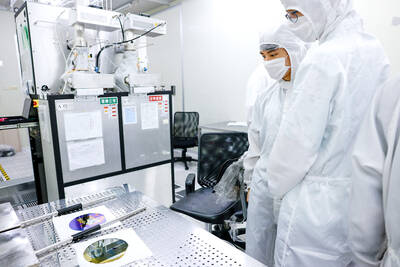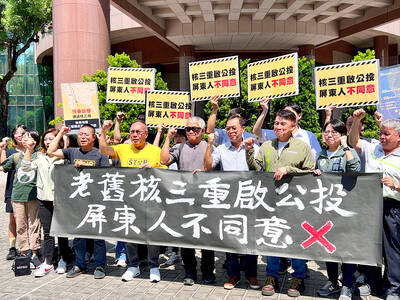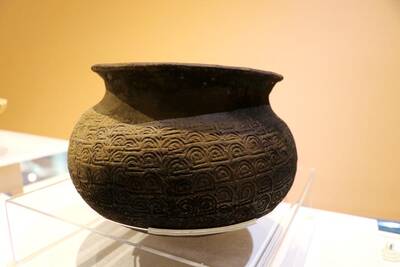The next time you go through security at an airport in the US, you might be told to empty your pockets, put your hands over your head and stand still while an X-ray machine looks for anything hidden under your clothing.
If this body scanning option sounds unappealing, you have another choice: an “enhanced pat down” conducted by a Transportation Security Administration employee, which some travelers have described as quite intimate.
The new screening measures have been hotly debated, but mostly in theory. Now that there are nearly 200 body scanning machines in about 50 domestic US airports, with 800 more on the way, passengers are facing real-life decisions about what to do.
HOW DO THE MACHINES WORK?
If you somehow missed the hoopla, there are two types of machines being installed. Both have raised concerns about privacy, health risks and even their effectiveness at catching terrorists. The more controversial “backscatter” devices project an X-ray beam onto the body, creating an image displayed on a monitor viewed by a Transportation Security Administration employee in another room. The “millimeter wave” machines, which are considered less risky because they do not use X-rays, bounce electromagnetic waves off the body to produce a similar image.
Unlike metal detectors, these machines can detect objects made with other materials, like plastic and ceramic. But they can’t see anything hidden inside your body, or detect certain explosives.
So why bother? That’s a question a federal oversight body and members of Congress are asking, especially since the Transportation Security Administration plans to spend billions of US dollars to buy the devices and hire more screeners to operate them — using the US$5 to US$10 security fee included in the price of any airline ticket (fees that the government wants to raise).
“This is all done to keep the traveling public safe,” said Nicholas Kimball, a Transportation Security Administration spokesman. Maybe so, but there are still questions about how effective these machines are at achieving that goal.
WHAT CAN SCREENERS SEE?
What these images reveal is unclear. Kimball said that the Transportation Security Administration uses filters to blur the images, and the agency has posted samples of the kinds of images screeners see and a video of the screening process on its Web site, tsa.gov. But critics say these samples aren’t detailed enough for travelers to judge how explicit they are, especially if a screener zooms in on a specific area.
Another concern is whether the images can be saved or transmitted. The Transportation Security Administration first said this wasn’t possible, then later admitted the machines can save photos, but that the feature had been disabled. This kind of backtracking has added to the agency’s credibility problem.
HOW SAFE ARE THEY?
The main concerns are how much radiation the scanners give off (the manufacturers say the amount is very low), whether the scanners might malfunction and emit more radiation than they are supposed to, and what the health effects may be for travelers. Since there is no precedent for routinely screening so many people with X-rays — other than in prisons — there are a lot of unknowns.
Another issue is that the devices haven’t been thoroughly tested. The Transportation Security Administration claims that the machines have been evaluated by the Food and Drug Administration’s Center for Devices and Radiological Health, the Commerce Department’s National Institute for Standards and Technology and the Johns Hopkins University Applied Physics Laboratory. When I called these organizations to ask about their evaluations, though, I learned that they basically tested only one thing — whether the amount of radiation emitted meets guidelines established by the American National Standards Institute, a membership organization of companies and government agencies.
But guess who was on the committee that developed the guidelines for the X-ray scanners? Representatives from the companies that make the machines and the Department of Homeland Security, among others. In other words, the machines passed a test developed, in part, by the companies that manufacture them and the government agency that wants to use them.
That’s one reason Peter Rez, a physics professor at Arizona State University, has been pushing for more data to be shared so that academics can do their own analysis.
“The scary thing to me is not what happens in normal operations, but what happens if the machine fails,” Rez said. “Mechanical things break down, frequently.”
Other medical experts are worried that the government has not adequately evaluated the health risks of such extensive X-ray screening, particularly for children, pregnant women, cancer patients and people who are sensitive to radiation. One concern is that the data the government is relying on underestimates the amount of radiation absorbed by the skin, potentially raising the risk of skin cancer.
“It’s premature to put a whole population through this thing, not without much more due diligence and much more independent testing,” said John Sedat, a biochemistry professor at the University of California, San Francisco. Sedat, along with several colleagues, sent a letter to the Obama administration calling for independent evaluations of the X-ray scanners.
So far, the Transportation Security Administration and government regulators have disputed their concerns. “If there is any risk, it’s very, very small,” said Daniel Kassiday, an Food and Drug Administration radiation official who was co-chairman of the committee that created the standard for the machines.
Kassiday said an individual could receive up to 1,000 screenings a year before reaching recommended annual limits for this type of radiation exposure, but added that more tests are being conducted and that once the Transportation Security Administration has redacted the relevant reports, more information will be released.
CAN YOU OPT OUT?
Kimball said passengers can choose not to
go through the scanner and opt for the
metal detector and a pat down instead, information that is also on the Transportation Security Administration’s Web site. But the message travelers are getting at the airport isn’t that clear.
“It definitely didn’t feel optional at all,” said Drew Hjelm, an Army veteran who recently encountered the X-ray machine at O’Hare Airport in Chicago. After asking to go through the metal detector, being turned down and even speaking with a supervisor, he was given other choices.
“The officer said, either you go through the body scanner or you leave the airport or we’re going to call the police and they’re going to come and arrest you,” Hjelm said. “After I went through the body scanner, they still patted my pants down.”
Since other passengers have said they weren’t given a choice, or were subjected to an aggressive pat down if they declined to be X-rayed, the Electronic Privacy Information Center has created an online form for travelers to report problems.
The advocacy group has also filed a motion in court to suspend the body scanner program, saying that it violates the Fourth Amendment (and other statutes) by imposing search procedures that are more intrusive than the courts have allowed for routine screening.
“We’re not denying that threats exist,” said Marc Rotenberg, the privacy center’s executive director, referring to concerns about terrorism. “The question is, are the solutions proposed effective and are they and are they legal?”

Sept. 1 to Sept. 7 In 1899, Kozaburo Hirai became the first documented Japanese to wed a Taiwanese under colonial rule. The soldier was partly motivated by the government’s policy of assimilating the Taiwanese population through intermarriage. While his friends and family disapproved and even mocked him, the marriage endured. By 1930, when his story appeared in Tales of Virtuous Deeds in Taiwan, Hirai had settled in his wife’s rural Changhua hometown, farming the land and integrating into local society. Similarly, Aiko Fujii, who married into the prominent Wufeng Lin Family (霧峰林家) in 1927, quickly learned Hoklo (commonly known as Taiwanese) and

The low voter turnout for the referendum on Aug. 23 shows that many Taiwanese are apathetic about nuclear energy, but there are long-term energy stakes involved that the public needs to grasp Taiwan faces an energy trilemma: soaring AI-driven demand, pressure to cut carbon and reliance on fragile fuel imports. But the nuclear referendum on Aug. 23 showed how little this registered with voters, many of whom neither see the long game nor grasp the stakes. Volunteer referendum worker Vivian Chen (陳薇安) put it bluntly: “I’ve seen many people asking what they’re voting for when they arrive to vote. They cast their vote without even doing any research.” Imagine Taiwanese voters invited to a poker table. The bet looked simple — yes or no — yet most never showed. More than two-thirds of those

In the run-up to the referendum on re-opening Pingtung County’s Ma-anshan Nuclear Power Plant last month, the media inundated us with explainers. A favorite factoid of the international media, endlessly recycled, was that Taiwan has no energy reserves for a blockade, thus necessitating re-opening the nuclear plants. As presented by the Chinese-language CommonWealth Magazine, it runs: “According to the US Department of Commerce International Trade Administration, 97.73 percent of Taiwan’s energy is imported, and estimates are that Taiwan has only 11 days of reserves available in the event of a blockade.” This factoid is not an outright lie — that

The People’s Republic of China (PRC) yesterday paraded its military hardware in an effort to impress its own population, intimidate its enemies and rewrite history. As always, this was paced by a blizzard of articles and commentaries in the media, a reminder that Beijing’s lies must be accompanied by a bodyguard of lies. A typical example is this piece by Zheng Wang (汪錚) of Seton Hall in the Diplomat. “In Taiwan, 2025 also marks 80 years since the island’s return to China at the end of the war — a historical milestone largely omitted in official commemorations.” The reason for its